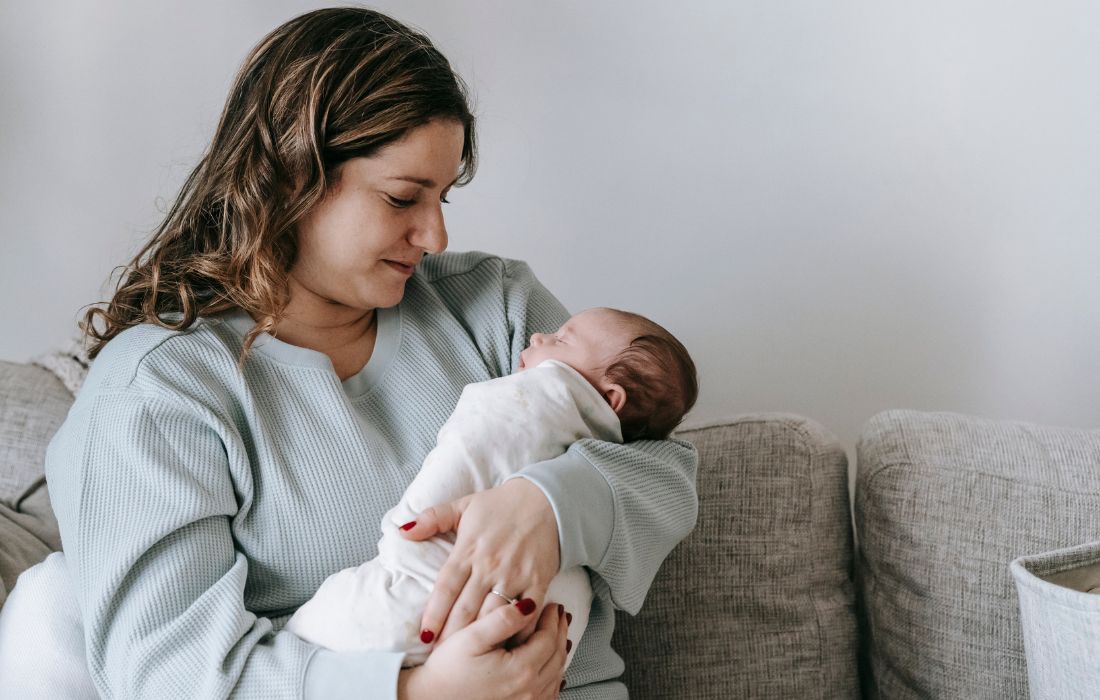Nap Training: How to Get Good Naps for Good Nights
If naps feel like a daily battle, you’re not alone. Many babies struggle with daytime sleep — short naps, skipped naps, and overtired fussiness. The good news? With gentle nap training, you can help your baby nap better and longer, without letting them cry it out. Just like gentle sleep training.
Here’s what we’ll walk through:
- Whether to nap train before or after night sleep
- How to spot your baby’s sleepy cues
- How to gently coach your baby into healthy nap habits
- How to set up the right nap environment and routine
If your baby is under six months, don’t worry about strict nap schedules. Follow their cues, and help them sleep when they need it. After six months, you can begin gently guiding naps with flexible routines — and I’ll show you how
Have no idea where to begin solving your child’s sleep issues?
Start with this guide.
Start with Night Sleep First
If your baby struggles with both naps and nights, focus on nighttime first. It’s easier for babies to learn sleep skills in a dark, quiet room with a predictable bedtime routine.While you’re night coaching, it’s okay to rely on nap “crutches” — motion naps, contact naps, or feeding to sleep — just to help your baby get through the day rested.But if those crutches stop working, you may need to coach naps and nights at the same time.
Spot Your Baby’s Sleepy Cues
Sleepy cues are your baby’s way of saying, “I’m ready to rest.”For babies on two naps a day, look for signs about 2 hours after waking, and again 2–3 hours later. Common cues include:
- Rubbing eyes
- Yawning
- Zoning out
- Getting fussy or distracted
For toddlers on one nap, tiredness usually shows up after lunch or about 6 hours after waking.Catching these early cues makes nap training much smoother.
How to Start Nap Training
Nap training takes time. You might need up to an hour to help your baby fall asleep — especially at first.If your presence is keeping them too alert or overstimulated, it’s okay to leave the room. Try timed check-ins every 5 to 15 minutes, depending on how your baby responds.This approach works even if you’re using the Shuffle at night.
Use an Abbreviated Bedtime Routine
Your baby is used to their bedtime routine. If your routine is bath, fresh diaper, book, snuggles, in bed awake, then you can modify this routine for nap training. A naptime routine may look something like this: fresh diaper, book, quick snuggle, in bed awake. Choose a few activities and make your routine consistent every night.
Talk to a Gentle Sleep Coach and get sleep help!
Book a 20-minute call for just $45.
Use Bedtime Rules for Nap Training
This means that if your baby stands up in her crib, you put her down once, and if it happens again, then ignore it. Essentially, you’ll be using a modified Shuffle for nap training.
How is Your Baby’s Sleep Environment?
Remember that you want your baby to recognize that it’s time to sleep. Take a look at their sleep environment. Is there a lot of light coming in? What about a comfortable temperature? Can your baby hear too much “traffic” or noise in her space?
Consider investing in blackout curtains if your baby’s room gets a lot of sun. To combat noise, a sound machine can help, or even just running a ceiling fan.

Where is the Best Place for Naps?
Your baby needs a consistent routine, and napping in her bed at home is the best way to help reinforce your nap training efforts.
Plan outings and errands around nap time, or hire a sitter to stay with your sleeping baby if you must be out during her usual siestas.
Use Dramatic Wake Up
If your baby refuses to fall asleep, it’s okay to leave the room for a full minute — time it on your watch. If this seems like too long, even 30 seconds is enough. Come back with a dramatic wake up. You want to impress upon him that you are getting him up because it’s time, rather than because he’s been fussing.
If this happens, be sure to watch your baby for his sleepy cues, and try to get him down for his afternoon nap as soon as you start to see them, even if it’s earlier than normal.
Avoid Disaster Naps
A disaster nap is a nap that is less than 45 minutes in length. These shortened naps are “disaster naps” because they are not a full sleep cycle. If you find that your baby is waking after only 20 or 30 minutes, you may be able to gently encourage her to go back to sleep with a small bit of reassurance.
Remember, naps are different than nighttime sleep, in that they change as your baby grows. If you find that your baby is taking more disaster naps than normal, consider modifying her nap schedule to help her get enough daytime sleep. This may mean moving naptimes around a bit, making the morning nap a bit later, or the afternoon nap a bit earlier. For some babies — especially those between six and eight months — a quick 45-minute late afternoon, or third nap, may be necessary.
Once you’ve started nap training, stick with it. Just like nighttime sleep, naps are something that your baby will gradually grow accustomed to. Remember to check his sleep environment and take into account other factors — such as turning off television for the hour before naps if you’re allowing screen time — to ensure that your baby has the best possible naptime environment.
Wondering about your baby’s schedule?
Read: Sample Schedules: Sleep and Naps From 6 Months to Preschool
Nap Training by Age
3-Month-Old
At 3 months, skip formal nap training. Your baby’s sleep rhythms are still developing. Focus on:
- Watching sleepy cues (eye rubbing, zoning out, fussiness)
- Offering naps every 60–90 minutes of awake time
- Using motion naps (stroller, carrier) — totally fine right now
- A short, calming pre-nap routine: feed, swaddle, sing, settle
This is foundation-building, not coaching.
4-Month-Old
If your pediatrician gives the green light, you can begin gentle nap coaching.
- Keep the nap routine short and soothing (5–10 minutes)
- Put baby down drowsy but awake
- Use The Shuffle: sit nearby, offer comfort without creating new crutches
- Wake windows: 1.5–2 hours
Some babies still struggle to link sleep cycles. That’s okay. Progress takes time.
5-Month-Old
By now, babies can start learning to nap more independently.
- Stick to 3 naps a day, ideally at consistent times
- Reduce motion naps if they’re no longer helping
- Keep wake windows around 2 hours
- Stay consistent during nap transitions and mid-nap wakeups
Short naps (30–45 mins) are normal. Don’t sweat it—stay the course.
7-Month-Old
Now’s a strong window for nap training.
- Most babies take 2 naps/day
- Wake time max: 2.5–3 hours
- Use The Shuffle: sit nearby, offer reassurance
- Practice naps in the crib to build habits
If naps are tough but night sleep is solid, consider coaching naps separately.
1-Year-Old
Most 1-year-olds still need two naps, though some start transitioning to one.
- Keep nap routines short and predictable
- Start naps at the same time daily—even if they don’t look sleepy
- Stay calm and consistent if they resist
- Use white noise, dark room, and a lovey (if safe)
Begin reducing hands-on help like rocking or feeding—use verbal and physical reassurance instead.



